Mission Statement
More than just a pulse reactor, TREAT is a transient reactor where inherently safe core physics, a nimble transient rod drive system, and a philosophy of continual facility improvement work together to enable flexible power maneuvers relevant to current fleet plants, advanced reactors, and scientifically valuable nuclear transients.
System Description
TREAT's hydraulically driven transient control rods couple with the Automatic Reactor Control System (ARCS) to leverage the primarily graphite core's negative temperature feedback to permit unrivaled power shaping capability. TREAT's transients can be shaped to vary over several orders of magnitude in reactor power and transient duration, the precise shape being practically governed only by the core energy capacity (currently 2500 MJ). ARCS can interface with experiment diagnostics instruments to allow feedback control and synchronization of experiment boundary conditions (e.g., nuclear and thermal hydraulic). Enhancements to core management/modeling methods and negative reactivity insertion "clipping" systems are being designed to augment this capacity for transient capabilities, transcending what is conventionally associated with graphite-based reactors.
Applications
120 kW steady state core power
· Specimen power coupling measurements
· Isotope build-in (e.g. 131I) for follow-on tests
· Neutron radiography
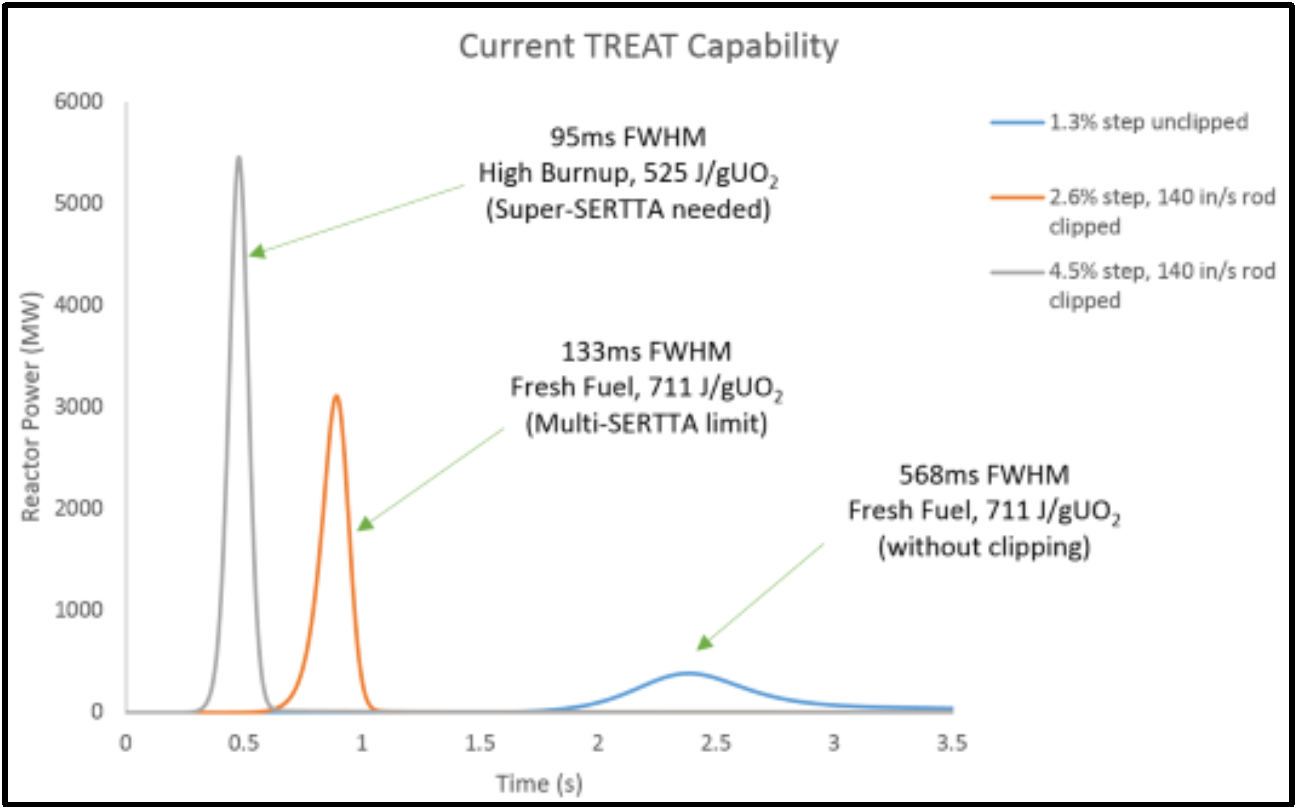
"Flattop" (>120 kW) transients
· Virtually any power level, time limited by 2500 MJ core energy capacity
· Heat balance and nuclear instrument calibrations
· Fission heating during thermal hydraulic transients in experiment vehicle (e.g. loss of flow)
· Can precede ramps, pulses, SCRAM decay, etc.
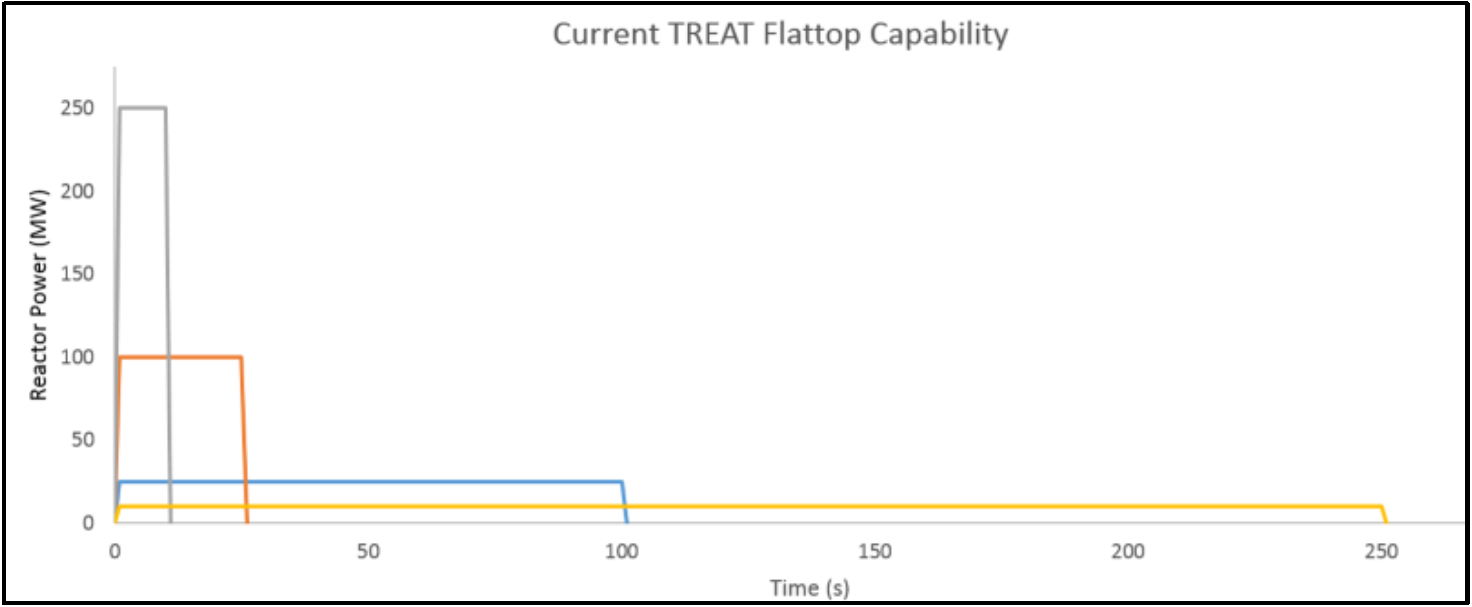
Unprotected transient over power (UTOP)
· Tuned to achieve desired fuel temperature and/or power history
· Ramp, pulse, shutdown, etc. can be triggered by experiment instruments
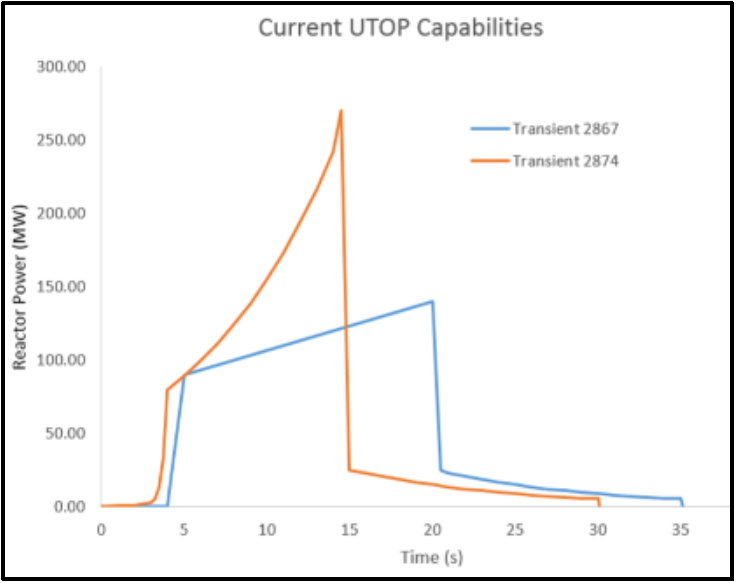
Loss-of-coolant accidents (LOCA)
· Short period of full-power heat generation
· Experiment vehicle depressurization synchronized with reactor power reduction
· Long period of fission heating provides internal heat generation to simulate decay heat
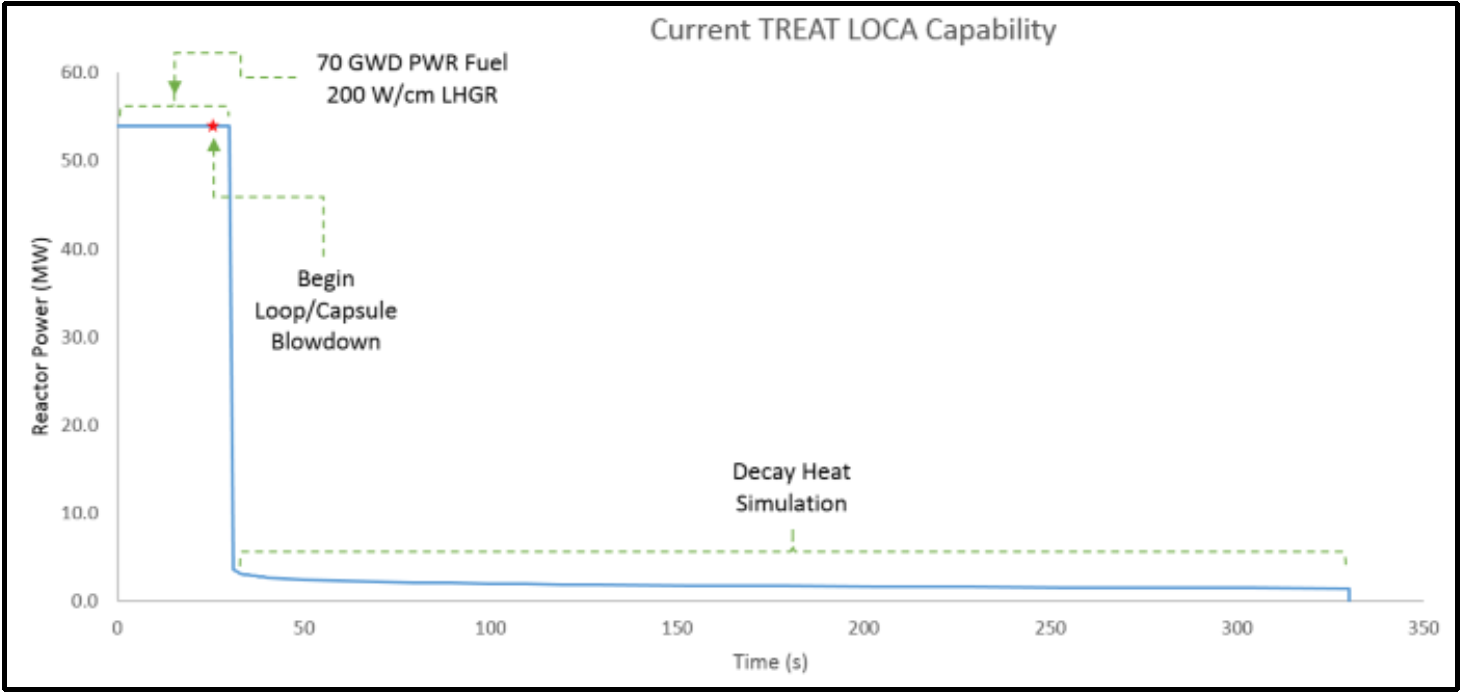
Boiling water reactor (BWR) void power instability
· Transient rod oscillations to simulate void power instability
· Similar transient shapes useful for measuring fuel thermal response properties in-core (e.g., thermal conductivity)
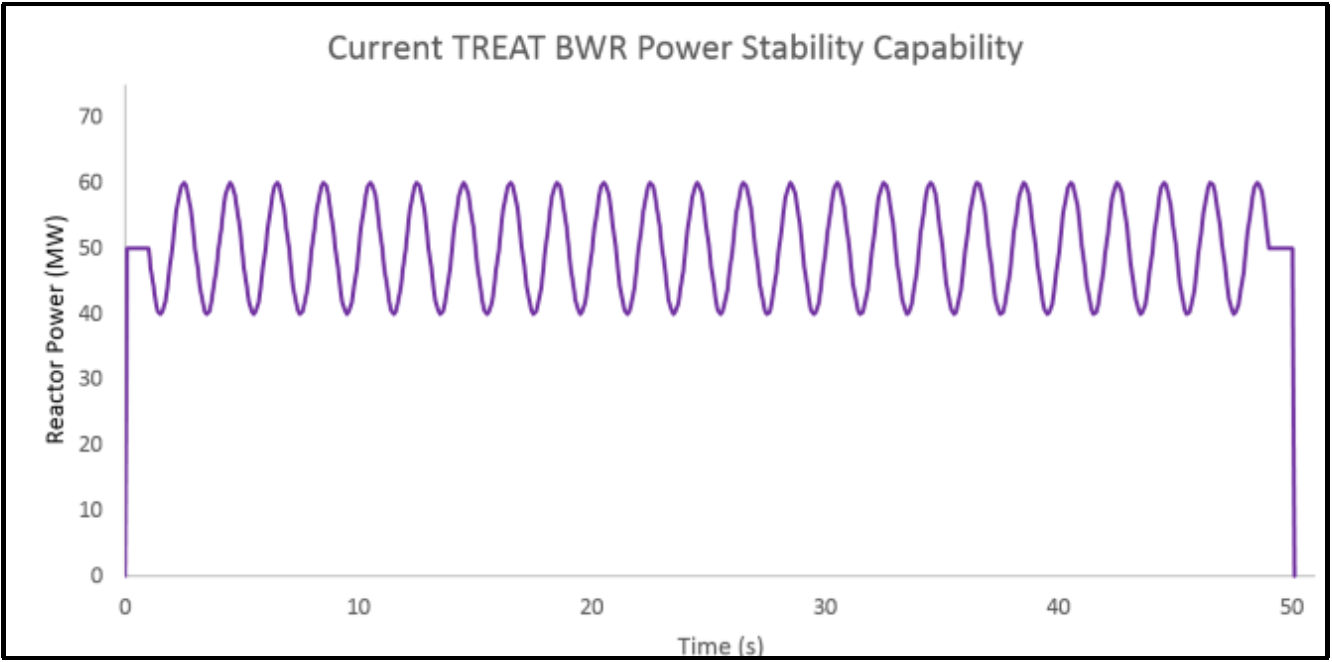
Pulse operations
· Step insertion 4.5% Δk/k → 2500 MJ released in ~0.5 sec, large acute neutron dose for short-lived isotope effect studies
· Transient rod clipping can achieve narrower pulses (89 ms full width half max [FWHM]) for light water reactor Reactivity Initiated Accident (RIA) simulation
· Step can start from near-zero power or follow a flattop
· Current project developing enhanced clipping and core management methods to achieve even narrower pulses, capable of driving high-burnup LWR fuel to regulatory limits in 46 ms FWHM
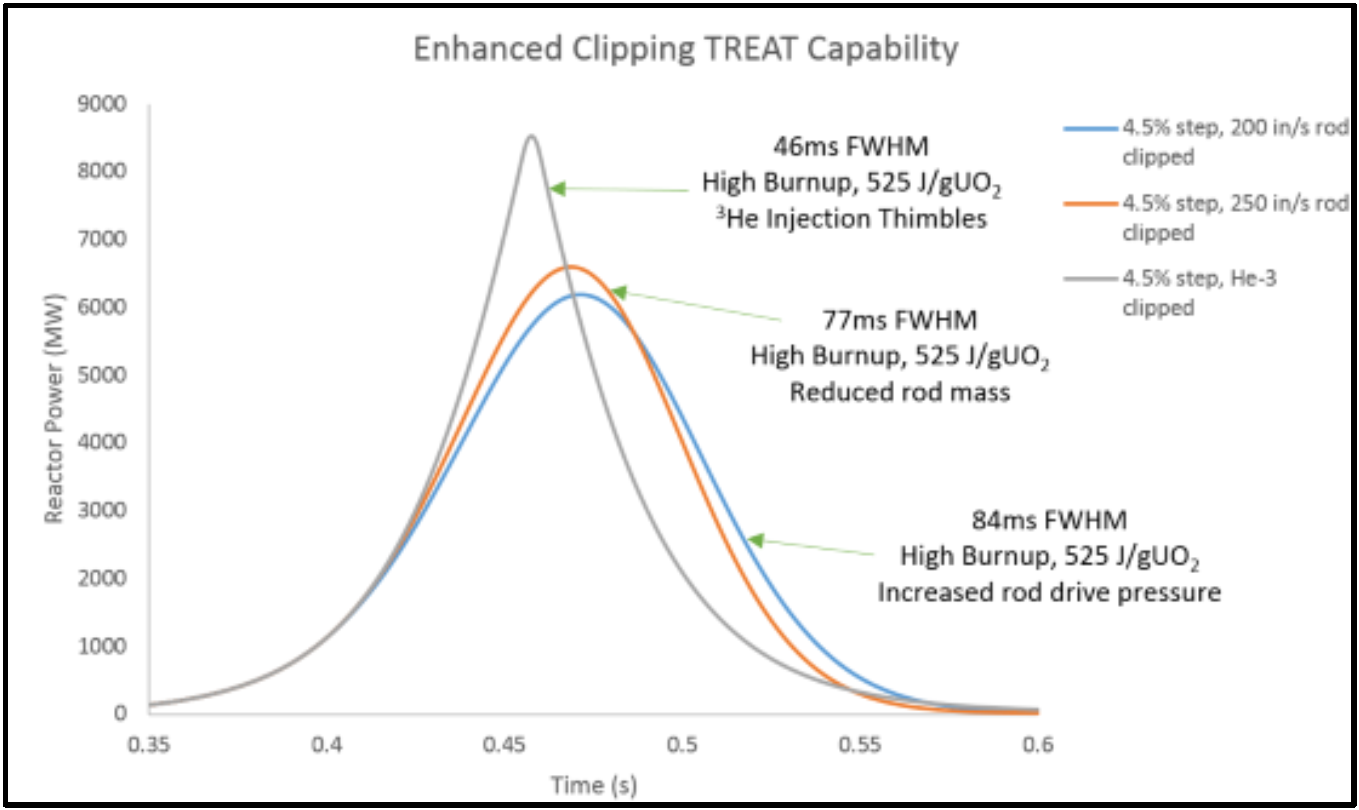
Specifications
Max transient rod speed: 3.6 m/s
Max core transient energy: 2500 MJ
Peak steady state power: 120 kW
Peak transient power: 19 GW